Ahead of her new show, New York photographer Grace Ahlbom talks to us about why she vicariously lives through young men like Jack Kilmer, Lukas Ionesco, and Julian Klincewicz

“I like to shoot people who are more reckless, careless, boisterous, edgy or extreme than I am… this keeps me on my toes,” muses 23-year-old New York-based photographer Grace Ahlbom when I ask her about her canon of worldwide muses. From Jack Kilmer to Lukas Ionesco and Julian Klincewicz, all have gazed down her lens, as well as become her friend. When pressed further, she tells me her subject choices often revolve around her seeing something of herself in them, or even bearing a similar experience to her had she not been born a girl. “When I hang out and document these boys, I feel like I’m looking back at what could’ve been,” she explains. “I feel like I’m living vicariously through their adolescence in a way that shows me what could have been mine if I grew up as a boy.”
Traceable within each of her series is a focus on young people and the subcultures they immerse themselves in, particularly musicians, actors and skateboarders. Most recently she tripped over to London and Paris to bring her project, Paris Sexy, to life. Paris Sexy is a fictional world Ahlbom has created that exists somewhere between London and Paris, and a place that these boys, with all their outrageous antics, inhabit. Each of the images are linked in a narrative, informed Ahlbom’s diary-like captions; “Lukas and I spent the afternoon at the zoo with his electric guitar. This is in the cougar room” or “I took portraits of Kaissan in my friend Shan’s Airbnb while Jack played the piano”.
Next week, the project will be exhibited for the first time at To_____Bridges_____ in the Bronx, New York. “It’s going to be an installation in the overhead space with a variation of posters and magazine tear outs of this series from floor to ceiling inspired by a teenager’s bedroom,” explains Ahlbom. “There will also be sketches and drawings intertwined by Romain Monnot, one of the French skater boys I followed.” Previewing a selection of the shots here, we also got to know Ahlbom a little better ahead of the opening.


Tell us how you first got into photography and what drew you to it?
Grace Ahlbom: For almost as long as I can remember I’ve been fascinated with taking photos. I started when I was in elementary school. Back then I would have my dad take me to the drug store every weekend to pick up a new disposable camera to photograph my friends riding BMX bikes off of our homemade jumps in my cul-de-sac. I would get the photos developed as fast as I could. Then I’d put them into one of my collections of 4 x 6” albums decorated with decals. Around this time, I learned what a zine was in an episode of Rocket Power, which must have been what compelled me to write “ZINE” in black sharpie on all of my photo albums.
I think that because we didn’t have Instagram or iPhones at the time, seeing yourself in print was a much more special experience. That was probably the motivation for the high demand at my elementary school to look at my albums. We would meet every foggy Monday morning on the seagull shit-covered lawn to pore over the one foot of air we achieved that past weekend. Today, I continue working on the same path at 23 years old.
You worked with Ryan McGinley for some time – what did he teach you and what did you take from that process that feeds into your work or process now?
Grace Ahlbom: While working for Ryan I learned a lot about his motivations and the production process behind his work. I was mostly interested in his aesthetic and how his variation of projects always weaved together seamlessly, like how Quentin Tarantino’s films all connected. Consistency is something that I pay a lot of attention to in my own work. Ryan also helped me realise that it’s possible to make being an artist your job. People often expect me to bring my camera everywhere I go. When I’m out shooting I’m working. My camera can be stressful, because when I work I’m so obsessive. My projects are such a production and a process, so it’s important to me that I separate my work from my time with friends, when I can go out and leave my camera behind.
”My projects are such a production and a process, so it’s important to me that I separate my work from my time with friends, when I can go out and leave my camera behind” – Grace Ahlbom
What drew you to these boys and tell us how you go about meeting people?
Grace Ahlbom: Romain reached out to me over Instagram, which gave me access to his entire crew of friends so I immediately had a handful of potential muses. I also started scouting more boys over the internet while in New York, which saved me a lot of time while in Europe. My type is usually the “timeless boy” who might remind me of a favourite movie character or be involved in something creative. Since these boys are also a projective self-portrait they have characteristics that resemble myself and traits that I wish I had. Typically I will message them and if we vibe then I’ll invite them to hang out with me once I know the dates I would be in their city. I try to make the meet-up more than just shooting. It feels much more genuine that way.
What do you think it is that draws you to skaters, musicians and actors mostly?
Grace Ahlbom: I like to shoot people who are more reckless, careless, boisterous, edgy or extreme than I am. I’m pretty reserved, but I’m usually attracted to people who are more reckless than myself or someone who has a louder personality than me, or more opinionated or expressive, or just really funny. This keeps me on my toes. For instance, most of my friends are actors so I am pretty receptive to their overtly dramatic antics in everyday life, but my friend Jack’s awfully convincing sarcasm usually flies right over my head. As a photographer, I admire my crew of skaters, musicians, and actors’ talent to perform.


Your series Dig in Your Heels, Stick to Your Guns follows a similar vein – you were shooting boys in which you saw something of yourself in. For this series, you mention looking at these kids through the lens of what could have been your adolescence if you were a boy. Can you tell us about that?
Grace Ahlbom: I do a lot of work with masculinity. I like to explore the gender binary and push the boundaries of masculinity and femininity. Since I am shooting to fill a certain void it was a really contagious age for me to study, since most of these younger boys are in their stage of “firsts”; first smokes, first kisses, first drinks, first crushes. And when I hang out and document these boys, I feel like I’m looking back at what could’ve been. I feel like I’m living vicariously through their adolescence in a way that shows me what could have been mine if I grew up as a boy. In my work I observe, envision and artistically render where I sit on the spectrum of gender identity, and in working with teenage boys I am doing that retrospectively.
Tell us about the kind of world Paris Sexy is?
Grace Ahlbom: I want my photos to look timeless. I love making a photograph where you can look at it and you can’t tell if it was made a few weeks or few years ago. By using black and white I was able to control the variations of color in the backgrounds and instead draw attention to the similarities of the subjects. I could portray the consistent thread on a basic human level. I was able to simulate a different world, almost like magical realism, by making the differences in cities (London and Paris) indistinguishable. I call this world Paris Sexy.
“I feel like I’m living vicariously through their adolescence in a way that shows me what could have been mine if I grew up as a boy” – Grace Ahlbom
What will Romain’s sketches and drawings bring to the show or add to your photos? Do you tend to prefer collaboration?
Grace Ahlbom: I met Romain over a year ago at a skate park in Paris and then he found me on Instagram. He paints older women, and he’s 16. By us collaborating on this project together it creates a special juxtaposition of our focuses. Romain concentrates on older women, and in this series I worked with teenage boys. I tend to weave collaboration in and out of my work when I think it fits best. I want Paris Sexy to feel as authentic as possible by introducing my journal entries and my subject’s manifests.
You mention language wasn’t necessary, however, there are other languages at play here. A kinship in similar interests which often transcends spoken language. Can you tell us about the similarities that you found within each person – irrelevant of their location?
Grace Ahlbom: I wanted to convey that language differences didn’t mean that we couldn’t communicate or share with one another. Regardless of where we were or the languages we did or didn’t speak, there was a very basic human element that was shared. Language isn’t the most essential aspect of human connections, and I wanted to share that through this series. Communication is all about reading people’s body language and actual verbiage is only secondary to that.
The captions feel like they tell a story – why are they so important to the images?
Grace Ahlbom: Much of my past work was creating these fictional characters in the studio that I would mould into my own. At the time it was not important to me for my subject’s personal story to come through my photographs since I was, in a way, dressing them up as myself. Alternately, while shooting Paris Sexy I really wanted these boys to have a story and a personality. I kept a journal to remember things they said or what exactly we were doing in each photograph. I was taking a Photography As Writing course at Pratt when I was introduced to the Contact Sheet 154: Deana Lawson catalogue. Lawson creates a sometimes uncomfortable context of intimacy by combining her photographs and journal entries. This inspired me while creating this project.




Your images feel very intimate, what does it take to achieve that with some one you don’t know very well?
Grace Ahlbom: That depends on what kind of photo I want. If I’m shooting someone in the studio the process is much faster because I know exactly what I want from them. They come in, I tell them what I want them to do and then it’s done. I don’t really have to “butter” anyone up because it’s easier to simulate intimacy in the studio. If I’m trying to photograph someone in a more documentary style setting then I have to really get to know them since we’re superimposing our connection on the real world. I find it easier start off as friends to have people pose for you in public. There are a few tricks I use to develop this with someone I want to shoot. I usually wait a few hours before I introduce my camera to my subject, so in the mean time we just hang out while I ask them a lot of questions about themselves. I want my subject to feel like I’m interested in them as a person rather than just a model, because I want to tell their story through my photos.
You’re based in New York for the most part, what did you find interesting about both London and Paris in terms of people, cultural differences, attitudes… in comparison to New York?
Grace Ahlbom: Being based in New York is amazing because I’m surrounded by millions of people, but ironically the downtown scene can feel really small. I’m tired of seeing similar photographs being made in the same places with the same people. That’s why I was drawn to the studio in the first place. I’m tired of shooting my friend’s exes, dealers, classmates, lovers, and coworkers so I decided to get out of town and hit the road. What I found most interesting in both London and Paris was that I was an outsider. Everyone I scouted was a new face to me; for once there weren’t any emotional ties or boundaries with these boys.
































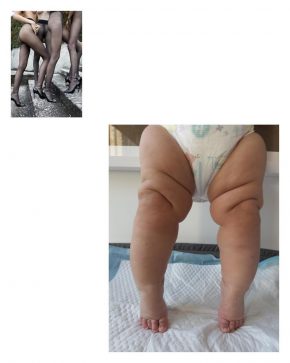
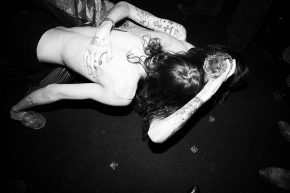
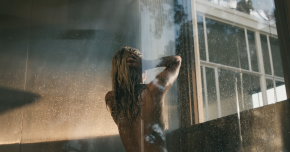
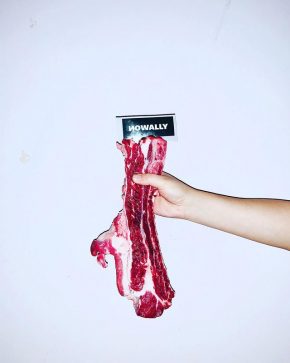
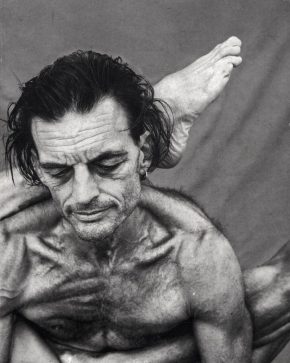
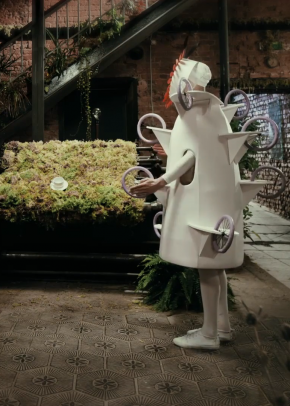
Comments